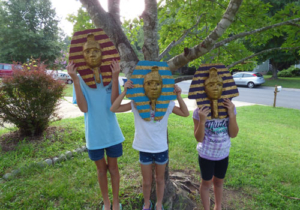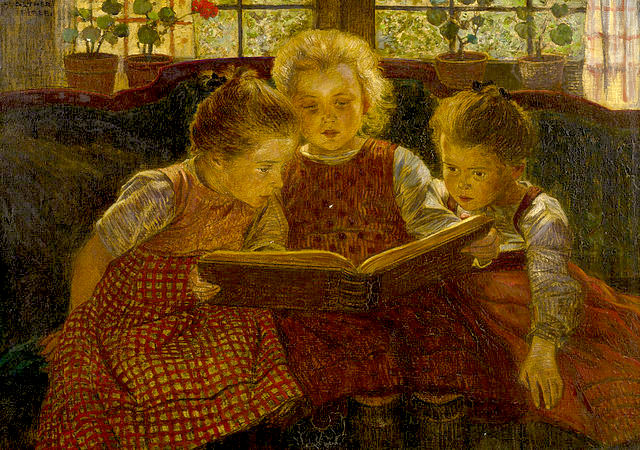
Would you like to increase your child’s reading comprehension, increase their creativity, and set them on the course to become an independent learner? And to top it all off, would you like to have fun in the process? Read on!
Imagine reading a story about the Trojan Horse of Ancient Greece, but you’ve never seen a painting or picture of the Trojan Horse. The picture in your brain of what the horse looked like might be hard to imagine, wouldn’t it? For students who are visual learners or have difficulty coming up with those brain movies that happen when great readers read, this could be a problem.
And it’s not uncommon. In fact, if you go to websites like edutopia, readingrockets, or scholastic, they all have lessons on teaching children to picture in their imaginations what they are reading. For some children this does not come naturally. They have a difficult time picturing in their brains what they read, and they have to be taught how to do this in order to improve their reading comprehension skills. This exercise in teaching a child how to picture subject matter is made even more difficult if they haven’t seen or experienced what they are reading about.
But if I read you a story about the Trojan Horse, show you a photograph of a painting of the Trojan horse, and talk about it, then you have references in your brain. Now, when I give you a book to read about the Trojan War on your level, you’ll have better comprehension, because I’ve given you tools to use.
Let’s take this one step further. What if we were reading a story about King Tut and mummy making while we studied about Ancient Egypt. If I give you lots of pictures of King Tut, his wonderful tomb, Howard Carter discovering his tomb, and his amazing mummy mask, we have given you visual references to help you make those brain movies for reading comprehension. But let’s not stop there.
Now let’s take it further with a project in mummy mask making. Suddenly, you not only understand the what, you’ll also understand some of the how, and the act of making something meaningful has helped create memories for you about what you have studied and seen. If we study King Tut and his mummy mask, then make a mummy mask, I’m giving you an experience that you are not likely to forget. And those memories that you have created will be references in your head for a multitude of experiences that you’ll read about, think about, and build on.
By doing this, by giving our children tools, visuals, hands-on learning, and experiences, we are helping our children expand their reading comprehension because we are building their knowledge base by increasing their vocabulary and increasing their experiences. All of this increases a child’s imagination, and helps them create those movies in their heads that helps with reading comprehension. But that’s not all this process accomplishes.
We are also helping them become something that should be one of the goals of every teacher of homeschool parent. We are helping them become independent learners. You see, when we help them reference pictures and experiences in their imaginations, we give them tools to to allow their imaginations and creativity to soar. This brings about confidence in their abilities. And when they have confidence in their abilities, they’ll take on harder and harder challenges. They’ll read that book that might be slightly above their level. They’ll tackle creating that project that they’ve never tried before. And ultimately it all takes them further down the road to becoming independent learners able to stand on their own two feet. So, should we as teachers and homeschoolers take time for visuals, take time for hands-on, and Take Time for Art? Absolutely!
Want help in bringing fun, integrated hands-on art history to your home or classroom? What if it was streaming video, easy, and included the materials! Visit us at Take Time for Art.

